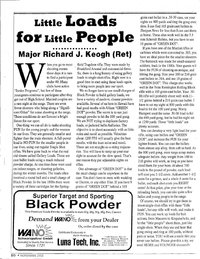The Load is 13 grains of Red Dot powder.
This article explains the details much better than I can : http://www.hensleygibbs.com/edharris/articles/The Load.htm
I got a helluva good deal on an eight pounder of Red Dot last year and decided to try The Load in my 03A3 Springfield. The 147gr fmj is said to be traveling about 1600 fps. No significant recoil or muzzle blast. Even with my ef'd up vision (cataracts etc) I can get about 1" groups at 50 yards with the issue sights. It makes me as happy as an orange popsicle on a hot day.![Smile [smile] [smile]](/xen/styles/default/xenforo/smilies.vb/001.gif)
I expect to get over 4000 rounds out of the jug of powder. I've got a thousand or so fmj bullets and then will switch to cast lead bullets.
I have not tried the load beyond 50 yards yet, but I would expect it to work out to about 200 yards.
Anyone else working on similar loads?
Jack
This article explains the details much better than I can : http://www.hensleygibbs.com/edharris/articles/The Load.htm
I got a helluva good deal on an eight pounder of Red Dot last year and decided to try The Load in my 03A3 Springfield. The 147gr fmj is said to be traveling about 1600 fps. No significant recoil or muzzle blast. Even with my ef'd up vision (cataracts etc) I can get about 1" groups at 50 yards with the issue sights. It makes me as happy as an orange popsicle on a hot day.
![Smile [smile] [smile]](/xen/styles/default/xenforo/smilies.vb/001.gif)
I expect to get over 4000 rounds out of the jug of powder. I've got a thousand or so fmj bullets and then will switch to cast lead bullets.
I have not tried the load beyond 50 yards yet, but I would expect it to work out to about 200 yards.
Anyone else working on similar loads?
Jack











